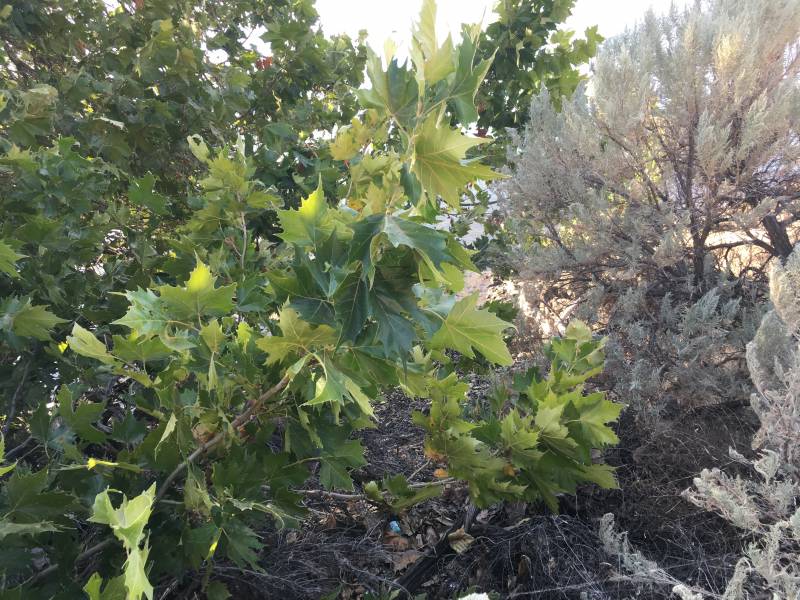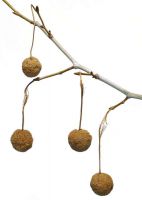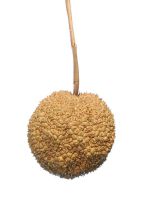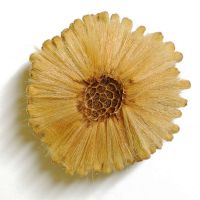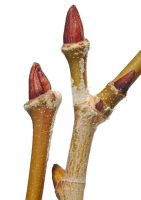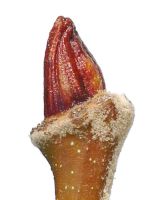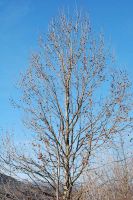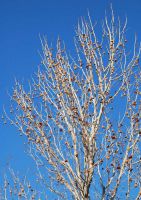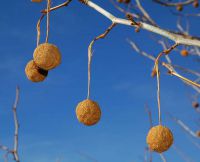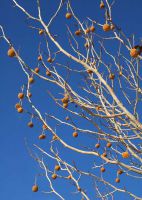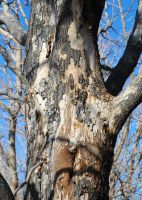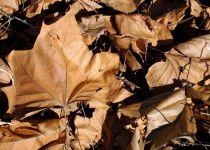Distribution: Occurring along the shores of the Columbia River in central and south-central Washington; common and native in central and eastern North America.
Habitat: Near streams, lakes, and moist ravines, often where disturbed.
Flowers: April-May
Origin: Introduced
Growth Duration: Perennial
Conservation Status: Not of concern
Pollination: Wind
Monoecious trees to 50 m. tall; all parts of the plant are covered with stellate hairs; bark creamy-white, scaling, much darker at the base, especially in older trees.
Leaves alternate, simple, 10-22 cm. long and wide, light green, usually palmately 3-lobed, occasionally 5; clefts shallow; leaf margins entire to coarsely serrate; the long petiole is swollen at the base.
Pistillate flowers in single heads 25-30 mm. in diameter on peduncles up to 15 cm. long; sepals 3-4, small, distinct; petals none; sterile stamens 3-4, woolly, club-shaped; pistils 3-9, free. Staminate flowers with 3-6 tiny sepals, and the same number of stamens opposite the sepals, much exceeding the sepals.
Achenes with a tuft of basal hairs attached.
Publication: Sp. Pl. 2: 999. 1753.
PNW Herbaria: Specimen records of Platanus occidentalis in the Consortium of Pacific Northwest Herbaria database.
WA Flora Checklist: Platanus occidentalis checklist entry.
OregonFlora: Platanus occidentalis information.
E-Flora BC: Platanus occidentalis atlas page.
CalPhotos: Platanus occidentalis photos.
USDA Plants: Platanus occidentalis information.


